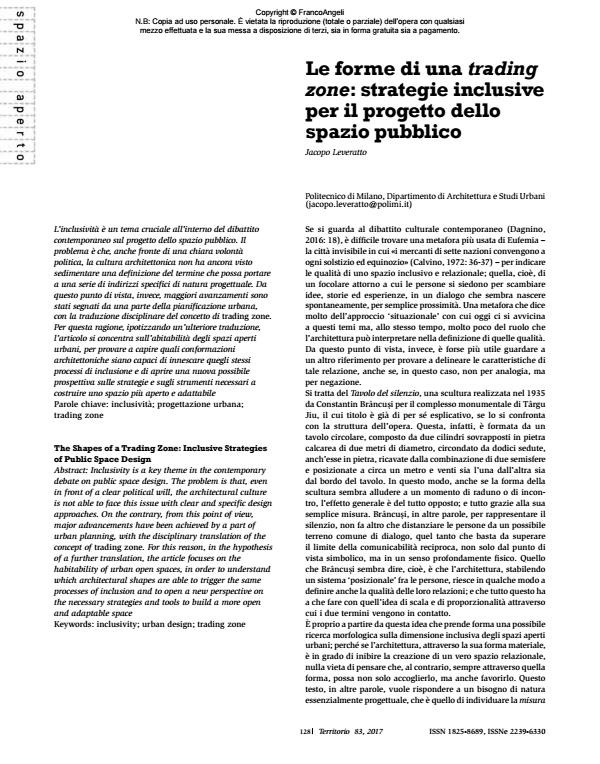The Shapes of a Trading Zone: Inclusive Strategies of Public Space Design
Journal title TERRITORIO
Author/s Jacopo Leveratto
Publishing Year 2018 Issue 2017/83
Language Italian Pages 9 P. 128-136 File size 424 KB
DOI 10.3280/TR2017-083018
DOI is like a bar code for intellectual property: to have more infomation
click here
Below, you can see the article first page
If you want to buy this article in PDF format, you can do it, following the instructions to buy download credits

FrancoAngeli is member of Publishers International Linking Association, Inc (PILA), a not-for-profit association which run the CrossRef service enabling links to and from online scholarly content.
Inclusivity is a key theme in the contemporary debate on public space design. The problem is that, even in front of a clear political will, the architectural culture is not able to face this issue with clear and specific design approaches. On the contrary, from this point of view, major advancements have been achieved by a part of urban planning, with the disciplinary translation of the concept of trading zone. For this reason, in the hypothesis of a further translation, the article focuses on the habitability of urban open spaces, in order to understand which architectural shapes are able to trigger the same processes of inclusion and to open a new perspective on the necessary strategies and tools to build a more open and adaptable space
Keywords: Inclusivity; urban design; trading zone
Jacopo Leveratto, Le forme di una trading zone: strategie inclusive per il progetto dello spazio pubblico in "TERRITORIO" 83/2017, pp 128-136, DOI: 10.3280/TR2017-083018